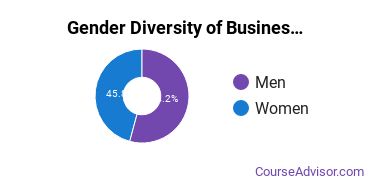Business, Management & Marketing at Rutgers University - Camden
Rutgers Camden is located in Camden, New Jersey and approximately 7,076 students attend the school each year.
Want to know more about the career opportunities in this field? Check out the Careers in Business, Management & Marketing section at the bottom of this page.
Rutgers Camden Business, Management & Marketing Degrees Available
- Bachelor’s Degree in Business, Management & Marketing
- Master’s Degree in Business, Management & Marketing
Online Classes Are Available at Rutgers Camden
If you are a working student or have a busy schedule, you may want to consider taking online classes. While these classes used to be mostly populated by returning adults, more and more traditional students are turning to this option.
Rutgers Camden does offer online education options in business, management & marketing for the following degree levels for those interested in distance learning:
- Master’s Degree
Rutgers Camden Business, Management & Marketing Rankings
The business, management & marketing major at Rutgers Camden is not ranked on College Factual’s Best Colleges and Universities for Business, Management & Marketing. This could be for a number of reasons, such as not having enough data on the major or school to make an accurate assessment of its quality.
Business, Management & Marketing Student Demographics at Rutgers Camden
Take a look at the following statistics related to the make-up of the business, management & marketing majors at Rutgers University - Camden.
Rutgers Camden Business, Management & Marketing Bachelor’s Program

Prospective students may be interested in knowing that this school graduates 8% more racial-ethnic minorities in its business, management & marketing bachelor's program than the national average.*
The following table and chart show the race/ethnicity for students who recently graduated from Rutgers University - Camden with a bachelor's in business, management & marketing.

| Race/Ethnicity | Number of Students |
|---|---|
| Asian | 31 |
| Black or African American | 39 |
| Hispanic or Latino | 81 |
| White | 170 |
| International Students | 9 |
| Other Races/Ethnicities | 18 |
Rutgers Camden Business, Management & Marketing Master’s Program

In the business, management & marketing master's program at this school, racial-ethnic minorities make up 49% of degree recipients. That is 12% better than the national average.*
The following table and chart show the race/ethnicity for students who recently graduated from Rutgers University - Camden with a master's in business, management & marketing.

| Race/Ethnicity | Number of Students |
|---|---|
| Asian | 33 |
| Black or African American | 16 |
| Hispanic or Latino | 19 |
| White | 67 |
| International Students | 3 |
| Other Races/Ethnicities | 6 |
Concentrations Within Business, Management & Marketing
If you plan to be a business, management & marketing major, you may want to focus your studies on one of the following concentrations. The table shows all degrees awarded in this field awarded for all degree levels at Rutgers University - Camden. A concentration may not be available for your level.
| Concentration | Annual Degrees Awarded |
|---|---|
| Business Administration & Management | 361 |
| Accounting | 74 |
| Finance & Financial Management | 51 |
| Marketing | 46 |
| Management Sciences & Quantitative Methods | 2 |
Careers That Business, Management & Marketing Grads May Go Into
A degree in business, management & marketing can lead to the following careers. Since job numbers and average salaries can vary by geographic location, we have only included the numbers for NJ, the home state for Rutgers University - Camden.
| Occupation | Jobs in NJ | Average Salary in NJ |
|---|---|---|
| Customer Service Representatives | 68,260 | $40,330 |
| Office Clerks | 67,480 | $35,450 |
| Secretaries and Administrative Assistants | 62,790 | $42,600 |
| Receptionists and Information Clerks | 54,490 | $33,120 |
| Bookkeeping, Accounting, and Auditing Clerks | 43,380 | $46,860 |
References
*The racial-ethnic minorities count is calculated by taking the total number of students and subtracting white students, international students, and students whose race/ethnicity was unknown. This number is then divided by the total number of students at the school to obtain the racial-ethnic minorities percentage.
More about our data sources and methodologies.
